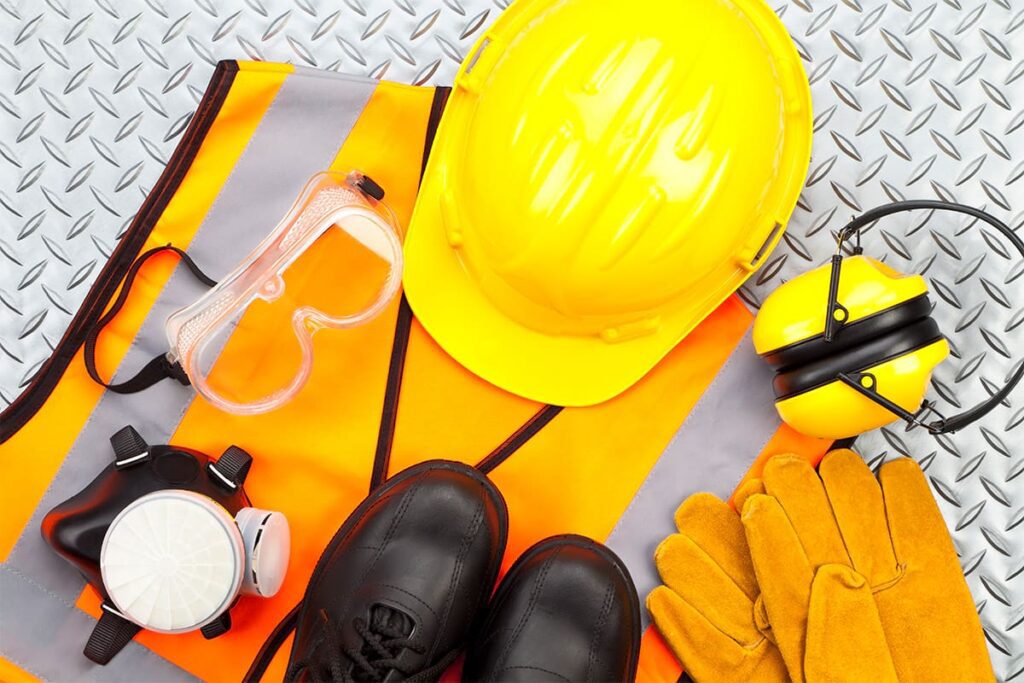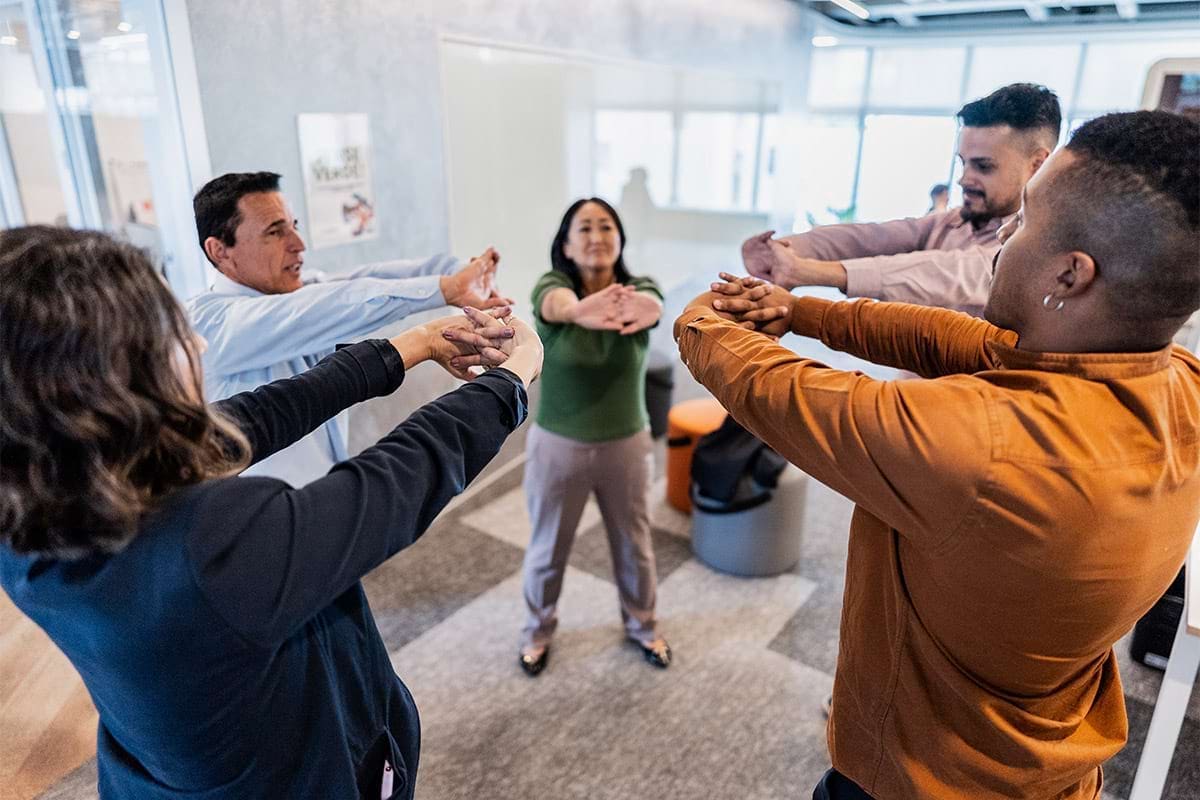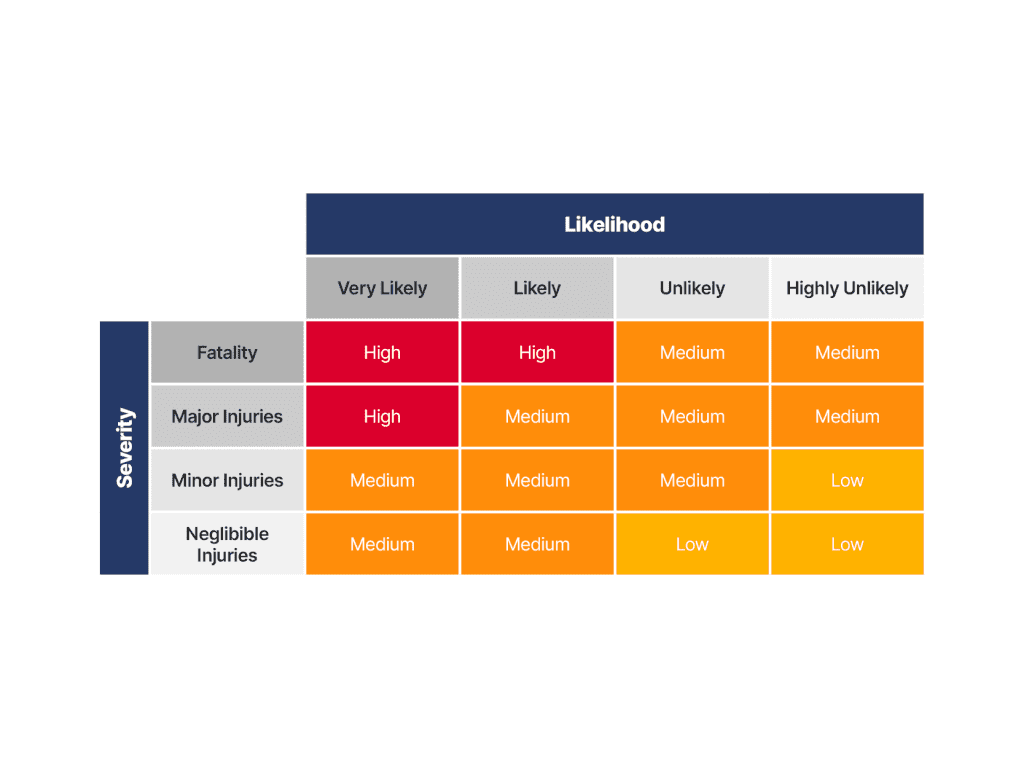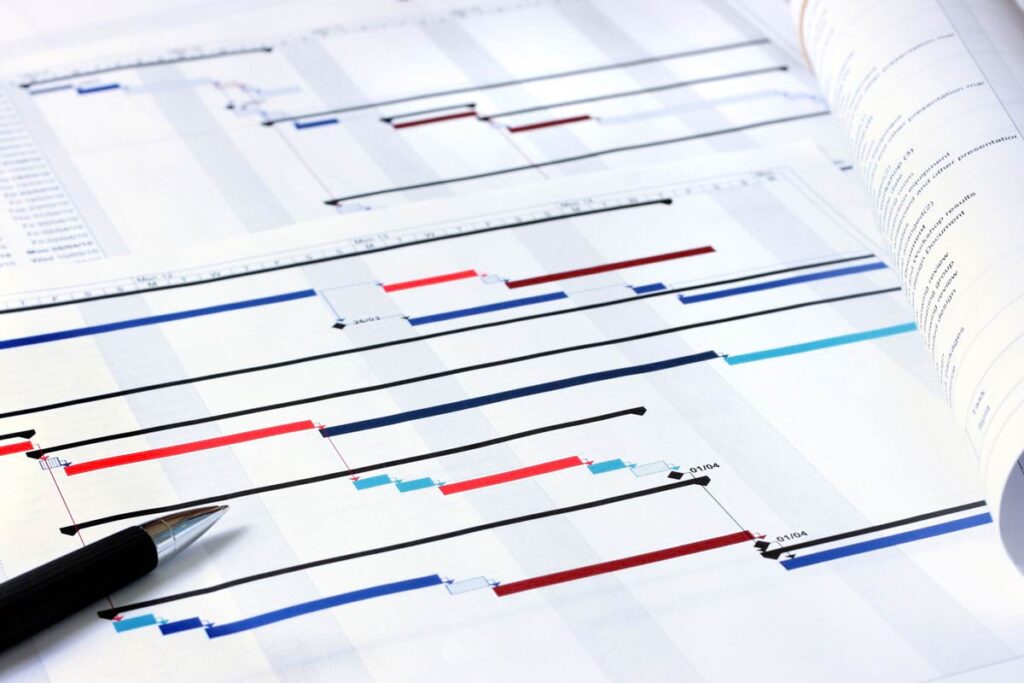Mental health is a crucial aspect of occupational health and safety. Poor mental health can result in burnout, substance abuse, and physical illnesses like high blood pressure, diabetes, and cardiovascular conditions.
It can also negatively impact employee productivity, morale, and the business directly. Poor mental health at work can be felt through increased absenteeism and associated costs, which can be detrimental to the bottom line.
Despite its importance, employers often overlook employee mental health or lack the skills and resources to implement effective workplace strategies.
In this blog, we provide practical advice and present real-life actions that can help improve mental health at work.
Table of Contents
Understanding Mental Health in the Workplace

Numerous studies have shown that the workplace environment can significantly impact employees’ mental health and overall well-being.
Factors such as unrealistic deadlines, excessive workloads, job insecurity, remote work, discrimination, and a demanding boss can lead to burnout, feelings of isolation, inadequacy, low self-esteem, and decreased productivity.
The Impact of Mental Health on Employees and Employers
It has been reported by the World Health Organization (WHO) that around 15% of the working population suffers from a mental disorder. Additionally, depression and anxiety result in approximately 12 billion lost working days worldwide, costing a whopping $1 trillion per year in lost productivity.
Moreover, in the United States, around 65% of workers consider the workplace a major source of stress and 83% of workers experience work-related stress. Without effective mental health at work strategies and support structures in place, mental health conditions, such as anxiety and depression, can negatively affect the entire workforce and business outcomes, resulting in:
- Reduced work performance: Mental health disorders can impact a worker’s confidence, attendance, motivation, outlook, and productivity.
- Impaired physical performance: Mental health conditions also affect physical performance. The Centers for Disease Control and Prevention (CDC) reports that employee mental health can interfere with an individual’s ability to complete physical tasks 20% of the time and reduce cognitive performance 35% of the time.
- Reduced teamwork: Mental health issues lead to decreased teamwork, tension, and conflict among co-workers.
Despite the high incidence of mental illness, the CDC finds that only 57% of workers reporting moderate depression and 40% of those with severe depression receive treatment to control symptoms.
Identifying Common Signs of Mental Health Issues at Work
Early detection of mental health conditions is crucial for achieving positive outcomes. When it comes to mental health challenges in the workplace, individuals may exhibit the following signs:
- Increased or unexplained absences.
- Persistent feelings of fatigue.
- Unusual decline in performance or errors.
- Heightened levels of anxiety.
- Decreased motivation or disengagement from tasks.
- Difficulty with meeting deadlines.
- Occasional displays of anger or irritability.
- Shortened temper.
- Indications of excessive alcohol consumption or hangovers.
- Avoidance of social interactions.
By recognizing these signs early, employers can help support the workforce and create a healthier work environment for everyone.
Creating a Supportive Work Environment

A supportive work environment can reduce mental illness and promote employee well-being. Here are some practical strategies to consider.
Fostering Open Communication
Identifying the signs of mental health issues and providing much-needed support to affected workers can often be challenging due to the stigma (including self-stigma) and isolation associated with mental health challenges.
Managers and business owners can help by fostering open conversations about mental health and creating safe and inclusive environments where employees can openly discuss their mental health and seek help if needed.
It’s important to acknowledge that mental health issues are prevalent in the workplace, and employees need to know they are not alone. Employers should be aware that everyone carries a heavy load, whether visible or not. Employees may be dealing with loneliness, grief, stressors at home, uncertainty about their work or future, or even substance abuse challenges.
OSHA provides several resources to help employers gain confidence in talking about workplace mental health, identifying workers at risk, and creating an enabling environment for change.
Developing a Mental Health Policy
A workplace mental health policy can effectively reduce the stigma surrounding mental illnesses. It can also improve employees’ perceptions of their employer’s commitment to their well-being and serve as the foundation for building a positive and supportive environment.
To create a comprehensive mental health policy for your workplace, it is essential to include the following key components:
- A clear definition of mental health issues in the workplace, including their symptoms and ways in which mental health disorders can manifest.
- Identification of factors that can cause mental health issues, such as workload, working conditions, deadlines, and job insecurity.
- The company’s commitment to identifying and addressing mental health issues among employees, including the resources and support available to them.
- Mental health awareness initiatives, such as training and health and wellness campaigns.
- Paid sick leave and personal days to support employees dealing with mental health issues.
- Available mental health programs through the company’s health care insurance.
- The responsibilities of managers to identify and address mental health challenges among employees.
Strategies for Supporting Mental Health at Work
The nature of work has transformed over time, and this has led to higher expectations of mental health support at the workplace. A recent survey conducted by the American Psychological Association (APA) found that 92% of employees consider it essential to work for an organization that values their emotional and psychological well-being and provides support for their mental health.
However, there is still room for improvement, as 55% of workers feel that their employer overestimates the healthiness of their workplace environment in terms of mental health.
Below are several strategies that can help promote mental health and well-being in the workplace.
Mental Health Resources and Training
According to the APA survey, only 12% of workers report that their employer has trained personnel to provide mental health support. Additionally, programs and benefits that support mental health at work are also lacking:
- Only 43% of employees have health insurance that covers mental health.
- 29% report that their employer offers an employee assistance program.
- Only 17% say their employer provides mental health days.
The lack of mental health support can have a detrimental impact on employees’ well-being and job satisfaction. In fact, 81% of survey respondents said that an employer’s support for mental health is an important consideration when looking for work, and 33% intend to look for another job due to a lack of mental health support.
Considering these findings, employers must recognize their vital roles in promoting the health and wellness of their workers, their families, and the workplace. There are several actions that employers can take to improve access to mental health training among managers and workers, create a safe and supportive environment, and support people with mental health conditions. You can check out these recommendations from the CDC, WHO, and OSHA, which include a handy checklist and examples of success stories from other employers.
Work-Life Balance and Flexible Work Arrangements

Flexible work arrangements have become increasingly popular among large U.S. companies. About one-third of companies are exploring new schedule shifts, like four-day and four-and-a-half-day work weeks. The main aim is to reduce burnout and attract and retain talent.
According to the survey conducted by the APA, 79% of workers who report having complete control over their work also report excellent mental health. One respondent said having control over their day-to-day activities, setting their own agenda, and having paid sick leave and time off for holidays helps them maintain their mental health and well-being.
On the other hand, one respondent mentioned that having no control over their schedule, poor work-life balance and bad management negatively impacted their mental health.
Addressing Mental Health Issues Among Employees
Early intervention is crucial for positive mental health outcomes for employees and employers. WHO estimates that employers receive a return of $4 in improved health and productivity for every dollar spent on treating common mental health issues.
Early Intervention and Supportive Measures
Supervisors and HR managers play an important role in identifying mental health issues and ensuring successful outcomes. For example, if an employee shows signs of mental illness, managers should express empathy and inquire whether the employee needs any assistance.
This assistance could involve:
- Reducing their workload.
- Prioritizing tasks.
- Managing deadlines.
- Offering flexible work hours.
- Ensuring workers have access to available mental health resources.
- Informing employees about their Family Medical Leave Act (FMLA) rights.
Navigating Conversations About Mental Health
Discussing mental health can be a difficult topic to approach. Employers must respect the privacy and willingness of the employee to discuss their condition. In case an employee is hesitant, managers can suggest options such as Employee Assistance Programs (EAPs) or counseling services.
When having a conversation about mental health at work, managers should:
- Show compassion and understanding towards the employee.
- Provide their undivided attention while dedicating enough time to the conversation.
- Steer the conversation by asking open-ended questions, such as “How are you feeling?” and “How can I help?”
- Reiterate what the employee has shared and ask questions to clarify any confusion.
- Offer help and resources to the employee.
- Schedule follow-up conversations and regular check-ins.
Leveraging Technology and Professional Support
Digital technology has the potential to positively impact mental health programs in the workplace.
There are several tools and applications available to promote mental well-being and resilience among employees. These include self-assessment tools, such as mobile apps, that allow employees to evaluate their mental health and access personalized support like exercises and therapy.
Many employers use apps and wearable devices that can anonymously track employee moods, emotions, activities, and heart rate – across the workforce. Employers can use the data to identify patterns and trends in stress levels, which can then be used to intervene and provide support during busy periods or as needed.
Employers can also provide access to or subsidize well-being apps that help workers reduce stress, increase mental awareness, and provide coping strategies.
Lastly, on-demand EAPs offer app-based and virtual mental health coaching, therapy, and clinical services, providing employees with immediate support as needed.
Mental Health at Work – A Shared Responsibility
Promoting mental health in the workplace can have a significant impact on the quality of life at work. When employers and employees prioritize mental health awareness and education, they can increase productivity, reduce absenteeism, lower healthcare costs, and ensure happier and healthier workers.
At Acuity, we offer a range of mental health case management and behavioral health services. These include mental health screening, advocacy, education, non-medical counseling, treatment plans, fit-for-work and return-to-work evaluations, assistance with workers’ compensation, and more. We follow all the necessary regulatory standards, including OSHA and HIPAA, to ensure that our services are safe and effective.
Learn more about our comprehensive care services or contact us today.
FAQs
-
What to do if your job is affecting your mental health?
The workplace can have a significant impact on mental health, leading to anxiety, depression, and even substance abuse. If you are struggling to cope due to workplace mental health, refer to your employer’s mental health policy. Are there workplace well-being or employee support resources you can turn to, such as employee assistance programs, counseling, or wellness programs?
Is your boss open and willing to discuss mental health in the workplace? If so, identify the triggers that are detrimental to your mental health, such as unrealistic deadlines, discrimination, or remote work, and have a frank and open discussion about the support available. Your manager may be able to provide helpful resources or make necessary changes to your work.
-
How do you know if an employee is suffering mentally?
65% of workers consider the workplace a major source of stress, so it’s highly likely that your employees experience mental health challenges at work at some point in their careers. Identifying signs of stress and intervening early is key to improving mental health in the workplace.
Potential signs that an employee is suffering mentally include:
• Increased or unexplained absences.
• Persistent feelings of fatigue.
• Unusual decline in performance or errors.
• Heightened levels of anxiety.
• Decreased motivation or disengagement from tasks.
• Difficulty with meeting deadlines.
• Occasional displays of anger or irritability.
• Shortened temper.
• Indications of excessive alcohol consumption or hangovers.
• Avoidance of social interactions.By recognizing these signs early, you can help support your workforce and create a healthier work environment for everyone.
-
How to use FMLA for mental health?
The Family and Medical Leave Act (FMLA) allows eligible employees of covered employers to take job-protected leave to deal with mental health conditions.
Under the FMLA, employers must provide 12 weeks of FMLA leave annually. Eligible employees can use FMLA to address a serious health condition, including a mental health condition.
To qualify for FMLA, the employee must meet one of the following criteria:
• The employee is receiving inpatient care. This includes an overnight stay in a hospital or medical facility, such as a treatment center.
Or:
• The employee is receiving continuing treatment for a mental health condition from a healthcare provider. Continuing treatment means the individual has a condition that incapacitates them for more than three consecutive days and requires ongoing treatment, such as multiple appointments with a healthcare provider or a single appointment and follow-up care. Continuing treatment also includes chronic conditions (including anxiety and depression) that cause the employee to require treatment by a healthcare provider at least twice a year.
To qualify for FMLA leave, the employer may require the employee to obtain certification from their healthcare provider.
Visit the U.S. Department of Labor website to learn more about FMLA leave for mental health.
































